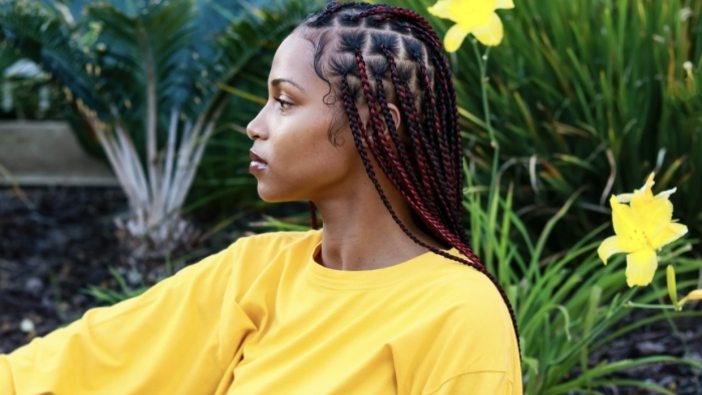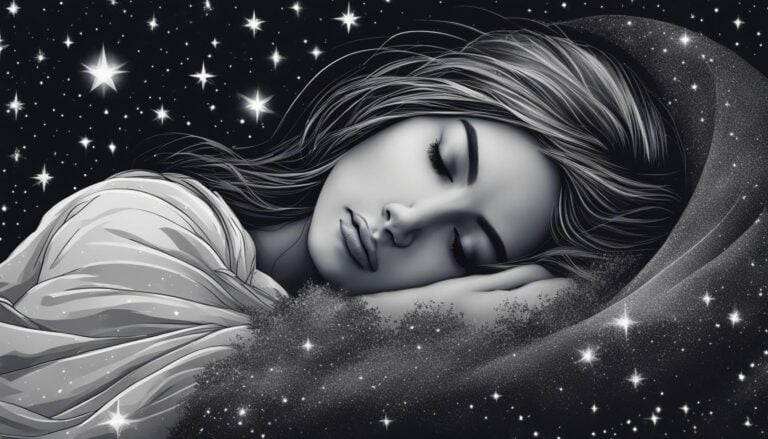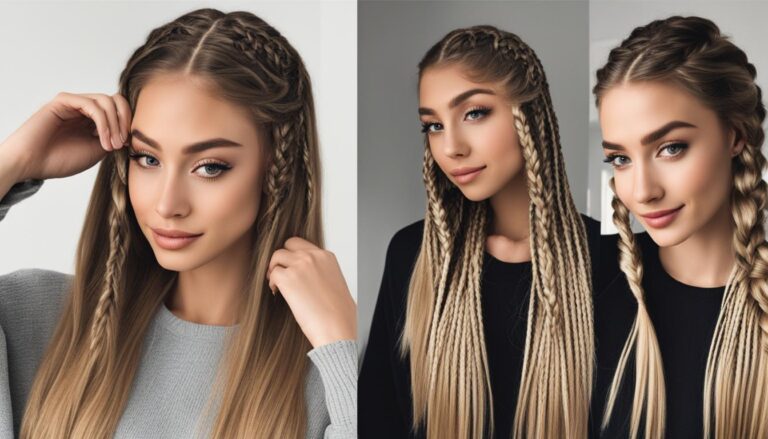How long will hair grow in 2 weeks?
Have you ever wondered how much your hair can grow in just two weeks? Well, the answer may surprise you. On average, hair grows at a rate of 0.3 to 0.4 mm per day. Over the course of two weeks, this translates to about one-tenth of an inch or slightly more. However, it’s important to remember that hair growth is not a one-size-fits-all process.
Various factors can influence the rate of hair growth, including genetics, hormones, nutrition, and stress levels. While the average growth rate provides a general guideline, individual experiences may vary. To promote optimal hair growth, it’s crucial to maintain a healthy diet rich in protein, calcium, iron, zinc, and vitamins. Additionally, practicing good hair care habits, such as avoiding harsh chemicals and excessive heat styling, can contribute to faster and healthier hair growth.
Key Takeaways:
- Hair grows at an average rate of 0.3 to 0.4 mm per day.
- Factors such as genetics, hormones, nutrition, and stress levels can affect hair growth.
- Maintaining a healthy diet and practicing good hair care habits can promote optimal hair growth.
- Individual experiences may vary, so patience is key when it comes to hair growth.
Factors Affecting Hair Growth
The rate at which hair grows is influenced by several factors that play a role in promoting healthy hair growth. These factors include genetics, hormones, diet, and overall health. While genetics determine the baseline speed of hair growth, nutrition is equally important in supporting optimal hair growth.
A diet rich in essential nutrients like protein, calcium, iron, zinc, and vitamin B complex can provide the necessary building blocks for hair growth. These nutrients help nourish the hair follicles and promote the production of healthy and strong hair strands.
Maintaining a healthy scalp is also crucial for promoting hair growth. Avoid excessive brushing of wet hair, as it can lead to breakage and damage to the hair follicles. Minimize the use of heat styling tools, as excessive heat can weaken the hair strands. Additionally, refrain from tight hairstyles that pull on the hair, as this can cause traction alopecia and hinder hair growth.
Other factors that can affect hair growth include:
- Physical or emotional stress: High stress levels can disrupt the hair growth cycle and lead to excessive hair shedding.
- Nutritional deficiencies: Lack of iron, biotin, and vitamin D in the diet can negatively impact hair health and growth.
To promote healthy hair growth, it is important to address these factors and adopt practices that support natural hair growth. Prioritize a nutrient-rich diet, practice good hair care habits, and consult with a dermatologist or healthcare provider for personalized advice on hair supplements or treatments. Remember, healthy hair growth takes time, so be patient and consistent in your hair care routine.
Ways to Enhance Hair Growth
When it comes to enhancing hair growth naturally, there are several practices that can aid in promoting healthier and faster hair growth. One effective method is to regularly massage the scalp with nourishing oils. Oils like argan, coconut, almond, or olive oil can stimulate the hair follicles and improve blood circulation to the scalp, which in turn promotes hair growth.
Another way to enhance hair growth is by using homemade hair masks. These masks can be made using ingredients readily available in your kitchen, such as egg yolk, olive oil, and honey. These natural ingredients provide nourishment to the hair, improving its overall health and stimulating growth.
Addressing any underlying causes of hair loss or slow growth is also crucial. Nutritional deficiencies, hormonal imbalances, and stress can all impact hair health. It’s important to maintain a balanced diet that is rich in protein, vitamins, and minerals to support optimal hair growth. Additionally, consulting with a dermatologist or healthcare provider can help determine if any hair supplements or treatments are necessary to enhance hair growth.
Overall, natural hair growth can be enhanced by adopting practices like scalp massage, using nourishing oils, and addressing any underlying issues. It’s important to be patient, as hair growth takes time, but with consistent care and attention, you can promote healthier and faster hair growth.

Understanding Hair Growth Cycle
The process of hair growth follows a distinct cycle that consists of different phases. It is essential to understand these phases to grasp how hair grows and the factors that influence its growth rate. The hair growth cycle can be divided into three phases: anagen, catagen, and telogen. Each phase plays a crucial role in determining the length and thickness of the hair.
The first phase of the hair growth cycle is called the anagen phase. This is the active growth phase, during which the hair follicle produces new hair cells. The duration of the anagen phase varies from person to person, but it typically lasts between 2 to 8 years. The longer this phase lasts, the longer the hair can grow. On average, about 90% of the hair on our scalp is in the anagen phase at any given time.
The next phase is the catagen phase, which is a transitional phase that lasts for about 2 to 3 weeks. During this phase, the hair follicle stops producing new cells, and the hair shaft begins to detach from the blood supply. Only around 1% of our hair is in the catagen phase at any given time.
The final phase of the hair growth cycle is the telogen phase. This is the resting phase, and it lasts for approximately 2 to 4 months. During this phase, the hair follicle remains inactive, and the hair eventually falls out. About 10% of our hair is in the telogen phase at any given time. After the telogen phase, the entire hair growth cycle starts again, with the anagen phase initiating the growth of new hair.
Hair Growth Across Different Body Parts
When it comes to hair growth, different body parts have their own unique characteristics. Let’s explore how hair grows on the legs, pubic area, and what happens after shaving.
Leg Hair Growth
Leg hair growth is a common concern for many individuals. On average, leg hair tends to grow at a rate of about half an inch or 1cm per month. However, it’s important to note that individual growth rates may vary based on factors such as genetics, hormones, and overall health.
To encourage leg hair growth, it’s essential to maintain a healthy lifestyle and nourish your body with a balanced diet rich in vitamins and minerals. Additionally, practicing good skincare habits, such as regularly exfoliating and moisturizing your legs, can help promote healthy hair growth.
Pubic Hair Growth
Similar to leg hair, pubic hair growth can also vary from person to person. The rate of growth is influenced by factors such as genetics, hormones, and overall health. As with any hair growth, it’s important to maintain a healthy lifestyle and provide your body with the necessary nutrients for optimal growth.
It’s worth noting that pubic hair serves a purpose in protecting sensitive areas and may also contribute to reducing friction during certain activities. If you have concerns about the rate of pubic hair growth, it’s always best to consult with a healthcare professional for personalized advice and guidance.
Hair Growth After Shaving
Many individuals wonder if shaving affects the rate or thickness of hair growth. The truth is, shaving does not alter the natural pace of hair growth. When you shave, you’re simply removing the hair from the surface, rather than affecting the hair follicle beneath the skin.
After shaving, the hair may appear thicker or coarser as it regrows because it has been cut bluntly. However, this is just a temporary visual effect, and the hair will eventually return to its natural texture as it grows. It’s important to remember that everyone’s hair growth pattern and experience may differ, so it’s always best to embrace and care for your hair in a way that feels comfortable for you.
Remember, hair growth is influenced by various factors and can vary from person to person. While leg hair tends to grow at a rate of about half an inch per month, pubic hair growth can differ between individuals. Shaving does not impact the rate or thickness of hair growth, as it only removes the hair from the surface. Embrace your natural hair growth journey and consult with professionals for personalized advice.
Conclusion
In conclusion, understanding the factors that impact hair growth can help us optimize the growth process. While the average hair growth rate is about 0.3 to 0.4 mm per day, it’s important to note that individual rates can vary. Genetics, hormones, nutrition, and overall health all play a role in determining the speed and quality of hair growth.
To promote optimal hair growth, maintaining a healthy diet and practicing good hair care habits are essential. Consuming a diet rich in protein, calcium, iron, zinc, and vitamins is crucial for nourishing the hair follicles and supporting healthy growth. Additionally, avoiding harsh chemicals, minimizing heat styling, and keeping the scalp healthy contribute to faster and healthier hair growth.
If you’re experiencing hair loss or have concerns about hair growth, it’s advisable to consult with a healthcare provider or dermatologist. They can provide personalized advice and recommendations based on your specific needs. Remember, hair growth takes time, so patience is key. With the right approach and care, you can support your hair’s natural growth cycle and achieve your desired results.
FAQ
How long will hair grow in 2 weeks?
Hair typically grows at a rate of 0.3 to 0.4 mm per day. In 2 weeks, this translates to about one-tenth of an inch or slightly more.
What factors affect hair growth?
Hair growth is influenced by genetics, hormones, diet, and overall health. Factors such as nutrition, scalp health, and stress levels also play a role in promoting healthy hair growth.
How can I enhance hair growth?
To enhance hair growth, you can maintain a healthy diet rich in protein, calcium, iron, zinc, and vitamin B complex. Additionally, practicing good hair care habits and addressing any underlying health issues can promote optimal hair growth.
What is the hair growth cycle?
The hair growth cycle consists of different phases: the active growth phase (anagen) and the resting phase (telogen). Each hair follicle has its own growth cycle, with about 90% of the hair in the anagen phase and the remaining 10% in the telogen phase.
How does hair growth differ across different body parts?
Hair growth rates can vary across different body parts. Leg hair tends to grow at a rate of about half an inch or 1cm per month, similar to hair growth on other body parts. Pubic hair growth can vary between individuals. Shaving does not affect the rate or thickness of hair growth.
What is the conclusion on hair growth?
Hair growth is a complex process influenced by various factors. While the average hair growth rate is about 0.3 to 0.4 mm per day, individual growth rates can vary. Maintaining a healthy lifestyle and practicing good hair care habits can promote optimal hair growth.







